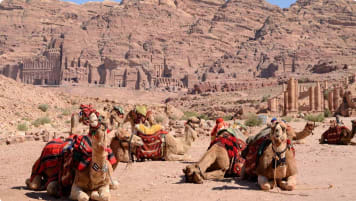Questions About Iran: The Definitive Guide for Travellers
Explore and learn about on a small group tour of Iran its ancient history in Persopolis. Study its Mosques and the garden design. Explore Tehran, Isfahan and Shiraz with like minded travellers.
5 Aug 19 · 2 mins read

Questions about Iran for senior travellers.
Odyssey Traveller specialises in crafting unforgettable experiences for senior and mature-aged travellers interested in learning as a couple or solo traveller. Providing adventure and educational programs to escorted small group tours since 1983. Odyssey has built up a reasonable knowledge bank to answer questions about Iran that travellers are likely to ask, as they make their plans to tour independently, or with us as part of a small group tour. We hope that this list of frequently asked questions and the answers we provide will help you with planning your next holiday.
Read on, but please do not hesitate to contact us via the website, or through email or chat if you have more questions about Iran or our other tours.
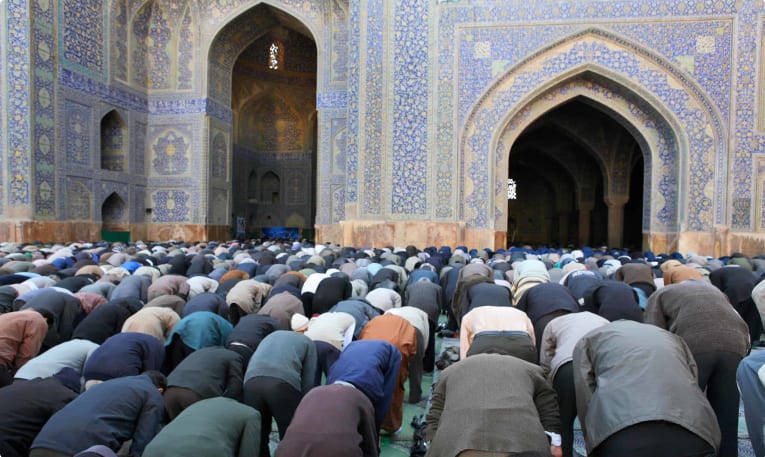
FAQs
Where is Iran located?
Iran is located in southwestern Asia, sharing borders with Azerbaijan, Armenia, and Turkmenistan (north), Pakistan and Afghanistan (east), and Turkey and Iraq (west). It is bounded by three bodies of water: Caspian Sea in the north, and the Persian Gulf and the Gulf of Oman in the south. A dozen islands in the Persian Gulf also belong to Iranian territory. It is the second largest country by area in the Middle East (after Saudi Arabia). Iran’s capital and largest city is Tehran.
When did Iran change its name from Persia?
Iran changed its official name from Persia in 1935, following a request from the Iranian government under Reza Shah Pahlavi to use the indigenous name instead of the Greek-derived “Persia”.
Iran has been historically known as “Persia” by its allies and enemies for thousands of years, derived from the adjective the Greeks used (“Persis”) in the 5th century BC to refer to the empire of Cyrus the Great. Persis was also derived from the name of the tribe to which Cyrus’s Achaemenid dynasty belonged. The name persisted until the Qajar rulers, whose dynasty was terminated by Reza Shah Pahlavi.
Reza Shah Pahlavi requested governments with which it had diplomatic relations to refer to the country as “Iran”, the word people in the region used to refer to themselves back in ancient times. It is derived from the Sanskrit word “Aryan”, which means “compatriot”.
The name change caused a bit of confusion at first, especially among Westerners who thought it was a new country carved from the Ottoman Empire, or who confused it with Iraq.
When did Iran become a country?
Iran is home to one of the world’s oldest civilisations, the centre of a great empire for centuries. At its height, its imperial territory stretched from the modern-day Balkan Peninsula in Europe, to the Indus River Valley in northwest India, and south to Egypt.
It became an Islamic Republic on April 1, 1979, following the Iranian Revolution that toppled its monarchy and paved the way for the leadership of Ayatollah Khomeini.
You can read more here in our previous article about Iran’s history, centred on the city of Tehran.
Other articles that may be of interest:
What do you offer in small group tours to Iran?
Odyssey Traveller specialises in crafting unforgettable experiences for senior and mature-aged travellers interested in learning as a couple or solo traveller. Providing adventure and educational programs to escorted small group tours since 1983.
This small group tour program includes the great cities of Iran, historic sites, mosques, gardens, bazaars and teahouses for couples and solo travellers.
Discover Iran’s splendid ancient and modern mosques, minarets, mausoleums, and markets
2.Fall in love with Esfahan, home to Naqsh-e Jahan Square, surrounded by covered bazaars and home to the architectural jewels of the Safavid Empire
3.Visit Yazd, an historic Silk Road oasis town, home to the oldest Zoroastrian fire temple and the haunting Towers of Silence
4.Be inspired by Shiraz, known as the city of poets, literature, wine, and flowers, visiting two famous Persian Gardens, the Bagh-e Eram and the Narenjestan-e Ghavam
Why a group tour in Iran?
Unlike its neighbours to the west and northwest, Iran had not adopted Christianity and it was the explosive spread of Islam and its ready adoption, without the Arabic language or customs, which helped unite the culture and greatly enrich Persian heritage.
Why should I book small group tours in Iran?
Odyssey offers easy, convenient, and relaxed escorted small group tours across Iran and beyond in the Middle East. We explore Iran’s natural beauty, its ancient and Imperial heritage, its World Heritage Sites, and world-famous cities, all with some truly spectacular scenery along the way. This and more are all waiting to be explored on one of Odyssey’s small group tours of Iran, designed for the senior traveller, and led by experienced, and enthusiastic likeminded people.
Discover the fascinating history and culture this country has to offer on our Iran small group tour for seniors. This escorted educational tour is perfect for mature and senior travellers with an active mind, seeking to learn about one of the world’s oldest civilisations, a fascinating country with many an ancient city to explore as you learn about central Iran. We regard this as one of the best travel tours in Iran for the senior traveller.
Travel on escorted Iran tour with us on a seventeen-day trip. Odyssey’s Iran tour is a tour package that introduces the traveller to a guided tour of Iranian culture, focusing on the west of Iran, taking in ten key destinations and must see places . This Iran small group tour for seniors introduces several key UNESCO World heritage site of ancient Persia to the traveller with a knowledgeable tour guide available at each location for Odyssey’s Travellers to gain an appreciation of the history of Iran and Iranian culture.
Iran is located in southwestern Asia or the middle east, once home to one of the world’s oldest civilisations. Iran in ancient Persia was the centre of a great empire for many centuries. At its height, Ancient Persia’s imperial territory stretched from the modern-day Balkan Peninsula in Europe, to the Indus River Valley in northwest India, and south to Egypt .
A country with a dramatic and colourful centuries-old history is bound to have incredible places to visit, ranging from the beautiful landscapes of the desert to Persian architecture of merit . Iran is definitely no exception. Odyssey’s Iran tour package has been refined over a number of years to provide the traveller with an insightful itinerary for an Iran tour. Odyssey offers multiple Iran tours each year for senior traveller interested in a small group Iran tour.
What is the capacity of Iran group tours?
Odyssey specialises in educational small group tours, for seniors, typically groups between 6 to 12 people, and no more than 16 travellers. Odyssey has been offering this style of adventure and educational programs, since 1983.
We offer a wide range of educational, cultural and heritage journeys that expand horizons and broaden the mind. Our tours are designed for active, inquisitive travellers in a small group environment.
What do you wear in Iran?
Islamic dress codes (modest clothing and head covering for women) are strictly enforced on Iranian citizens, but rules are not as tight for foreigners, who are given some degree of flexibility. However, it is still advisable to observe and respect local customs.
For women, this means wearing a head covering (usually a scarf) and wearing clothes that cover your arms and legs in public places. Tops should extend to cover your behind, especially if wearing tight jeans. Wearing outerwear such as a manteau (a long coat or coat dress, usually made of cotton) is a good option.
For men, there are less restrictions, but shorts and sleeveless shirts should still be avoided.
Important shrines may require women to wear a chador, which is available on-site and can be borrowed. A chador is a large piece of cloth that leaves only the face visible.
What do you need to travel to Iran?
You will need a tourist if you are planning to visit Iran. Citizens of the United States, United Kingdom, Canada, Bangladesh, Jordan, Iraq, Afghanistan, and Pakistan need to get a consular visa before they travel to Iran. If you’re from one of these countries, you need to get an authorization number before applying for the visa. People from other countries have to apply online first via Iran’s e-visa portal. Visas on arrival are only available at airports. A visa on arrival is valid for 30 days.
If there is proof of entry to Israel in your passport, you cannot travel to Iran.
UK, US, and Canadian citizens cannot travel to Iran without a guide.
How to get Iran tourist visa?
Before you can apply for an Iran visa, you must have a sponsor in Iran who can issue a Letter of Invitation. Once you receive the Letter of Invitation, you can submit it along with the required documents at an Embassy or Consulate of Iran in your country.
If you are travelling for tourism purposes, you have to contact a travel agent in Iran or a friend or relative who will host you. If you are travelling for business, then the company you are visiting can issue your invitation letter.
The travel agency, host, or company in Iran will submit an application with the Iranian Ministry of Foreign Affairs (MFA). If the application is successful, they will send you a visa code, which you have to take to the Iran Embassy/Consulate along with all the other required documents.
See more information here: https://evisa.mfa.ir/en/
When to travel to Iran?
Iran offers seasonal extremes; spring (March-May) and autumn (Sep-Oct) offer the best conditions for travellers– you’ll dodge searing heat and bitter winter cold (with snow-blocked mountain roads).
How much does Iran travel cost?
You should plan to spend around $46 per day on your vacation in Iran, which is the average daily price based on the expenses of other visitors.
But is it better to travel to Iran in group tours or as individuals?
When you travel in a group tour, you have the chance to meet various people and experience visiting a new country with new people. You can share your impression with others and even make new friends. So, travelling in groups is a very good way of experiencing the unknown world.
Travelling in Iran small group tours can also increase your willingness to visit the country and experience the image you have had in your mind about the country. It is true that for some solo travellers it gives a better feeling of safety to travel in group tours.
What are the best tours in Iran?
Visit Odyssey’s culture and history tour to Iran, with departures in April and October.
For whom are the small group tours suitable?
Odyssey is based in Sydney, Australia, however, we have many travellers from USA, Canada, UK and Europe who travel with us every year.
We specialise in educational small group tours for seniors, typically groups sizes are between 6 to 12 people, and no more than 16 travellers. Odyssey has been offering this style of adventure and educational programs to since 1983. We offer a wide range of fully escorted, cultural and heritage journeys that expand horizons and broaden the mind. Our tours are designed for active, inquisitive travellers in a small group environment.
How is the food in these tours?
Odyssey includes many meals as part of our itineraries.
Breakfast at the hotel is usually included as well as a welcome and farewell dinners.
We believe sharing a meal with your fellow travellers is a great way to end the day and talk about your experiences, so we have a few dinners included along the way too.
In more remote destinations, most meals are catered for.
How have you chosen the hotels?
In major cities Odyssey stays in centrally located 3–4-star hotels, with easy access to public transport. In smaller towns or rural areas, we usually stay in family-run hotels or guesthouses. On our long-stay tours, during which you spend the length of the tour in a single location, we use serviced apartments where available.
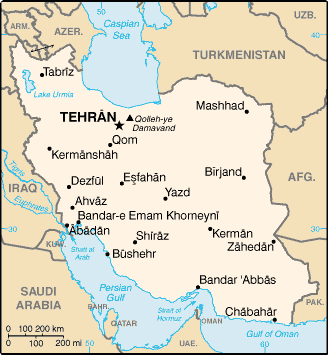
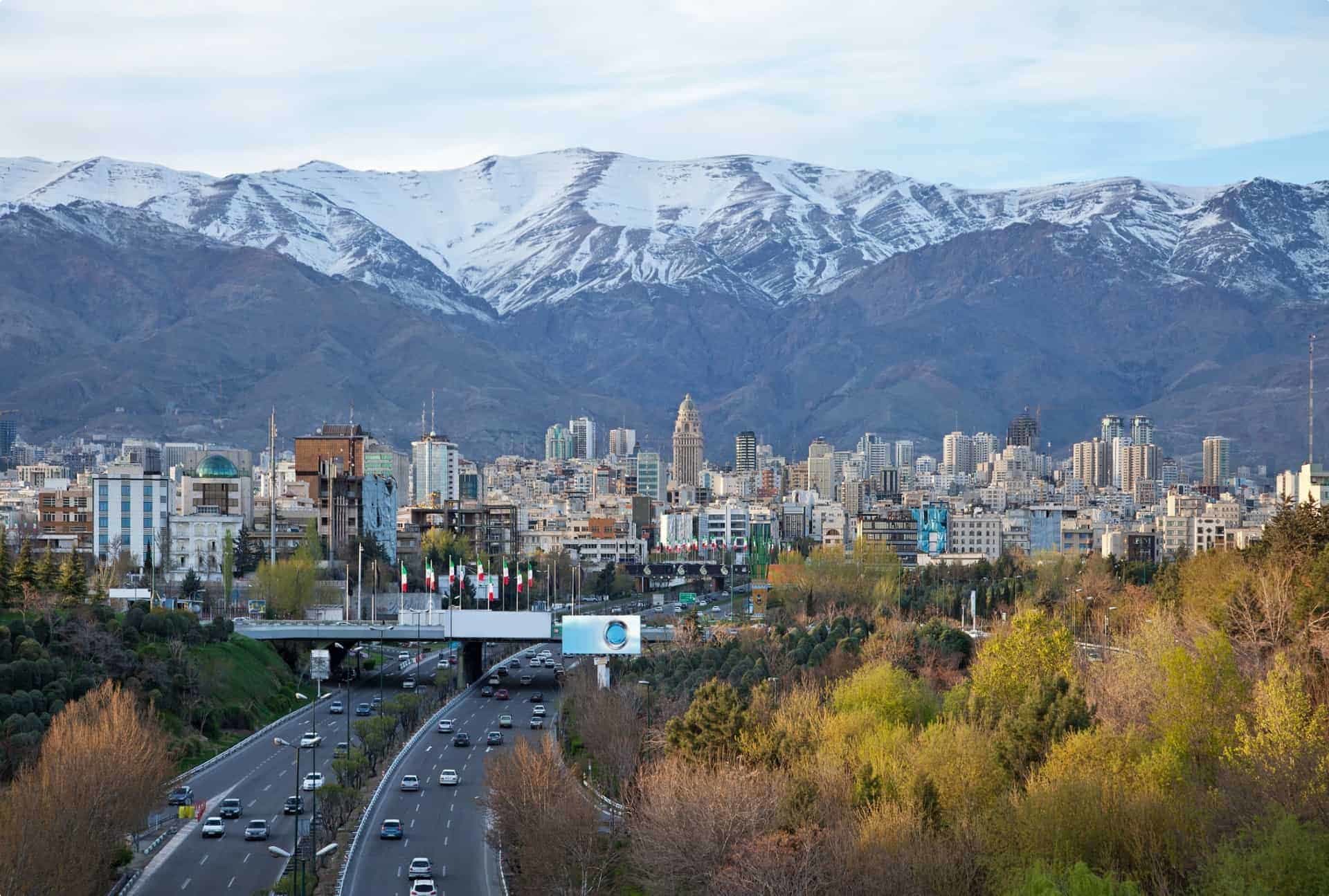
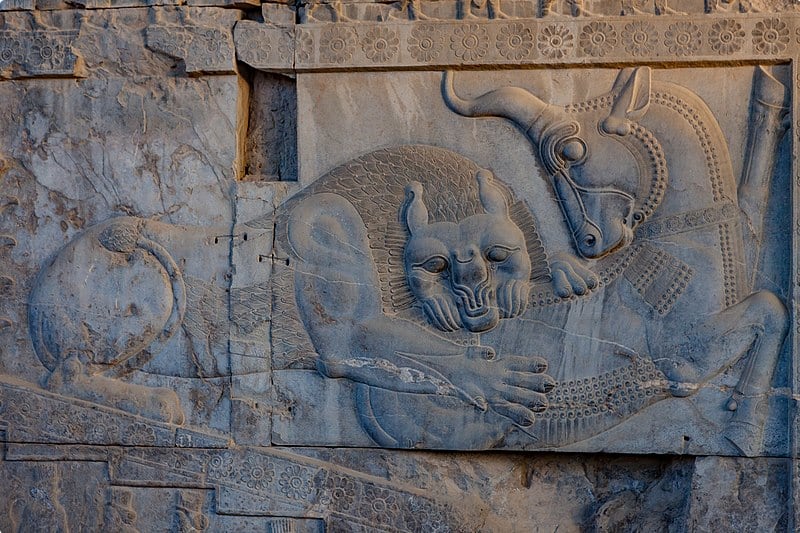
How is Iran ruled?
As a unitary Islamic republic, the Iranian government is dominated by the clergy.
After the revolution, political leadership is no longer inherited but is instead bestowed by an assembly of ulama or Muslim scholars. Decisions regarding who should be Supreme Leader are made based on a candidate’s personal piety, expertise in Islamic law, and political acumen. Ayatollah Ali Khamenei has held the position since Khomeini’s death in 1989.
A constitutional amendment in 1989 abolished the post of prime minister and gave greater authority to the president, which until then is only a ceremonial post. The president is elected by the people. The president answers to the Supreme Leader and must be a native-born Iranian Shīʿite. The judiciary follows Islamic law.
The capital Tehran, however, has been described as Iran’s “most secular and liberal city”. Oliver Wainwright, writing for The Guardian, describes youthful rebellion in Tehran in the form of flirtations in traffic jams and hip-hop music blaring in a skatepark, and likens the city to “Los Angeles with minarets”. (Tehran was indeed designed by an Austrian immigrant to the United States, architect Victor Gruen, who pioneered the design of American shopping malls.)
What is Iran's language?
Farsi (Persian) is the official language of Iran. More than half of Iran’s population are Persian speakers. According to the Iran Chamber Society, Classical Persian, which was also infused with Arabic words, “remained essentially unchanged until the nineteenth century”. This was until a dialect, Teheran (or Tehrani), rose to prominence after the Qajar Dynasty chose Tehran as its capital, moving the centre from Shiraz. The dialect became the basis of Contemporary Standard Persian.
Can you travel to Iran without a visa?
You will need a visa to travel to Iran, which can be applied for online. All visitors to Iran must hold a passport or travel document valid for six (6) months at the time of departure. The documents required for visa application include:
- Passport
- Travel itinerary
- Résumé or Curriculum Vitae
- Digital photo
- Digital image of your passport
- Other information (depending on the visa type applied)
Make sure to check with the Iranian embassy or your local consulate for the latest news and if there are changes in the requirements. You may also be exempt from applying for a visa, depending on your citizenship. Citizens of the Republic of Azerbaijan, Bolivia, Turkey, Syria, Lebanon, Georgia, Armenia, Venezuela, Egypt and Malaysia can visit Iran without a visa.
What currency does Iran use?
The currency of Iran is the Iranian rial, although in everyday usage Iranians still use the “toman”, equivalent to 10 rial, as a unit of currency for transactions. The rial (from the Spanish word meaning “royal”) replaced the toman as the official unit of currency in 1932 under the Pahlavi dynasty in a hope to Westernise the country. In 2016, the Iranian government considered switching back to the toman, which in Turkish means “ten thousand”.
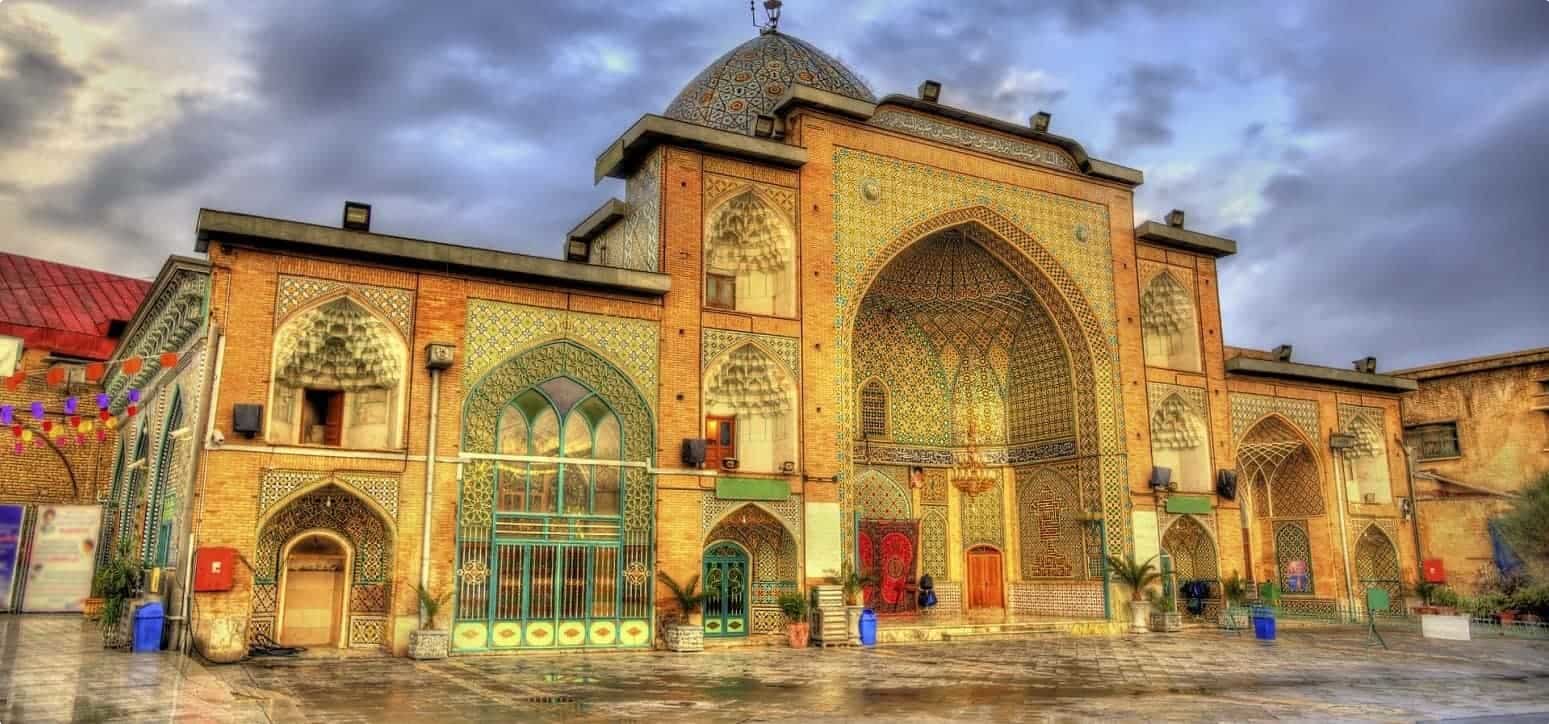
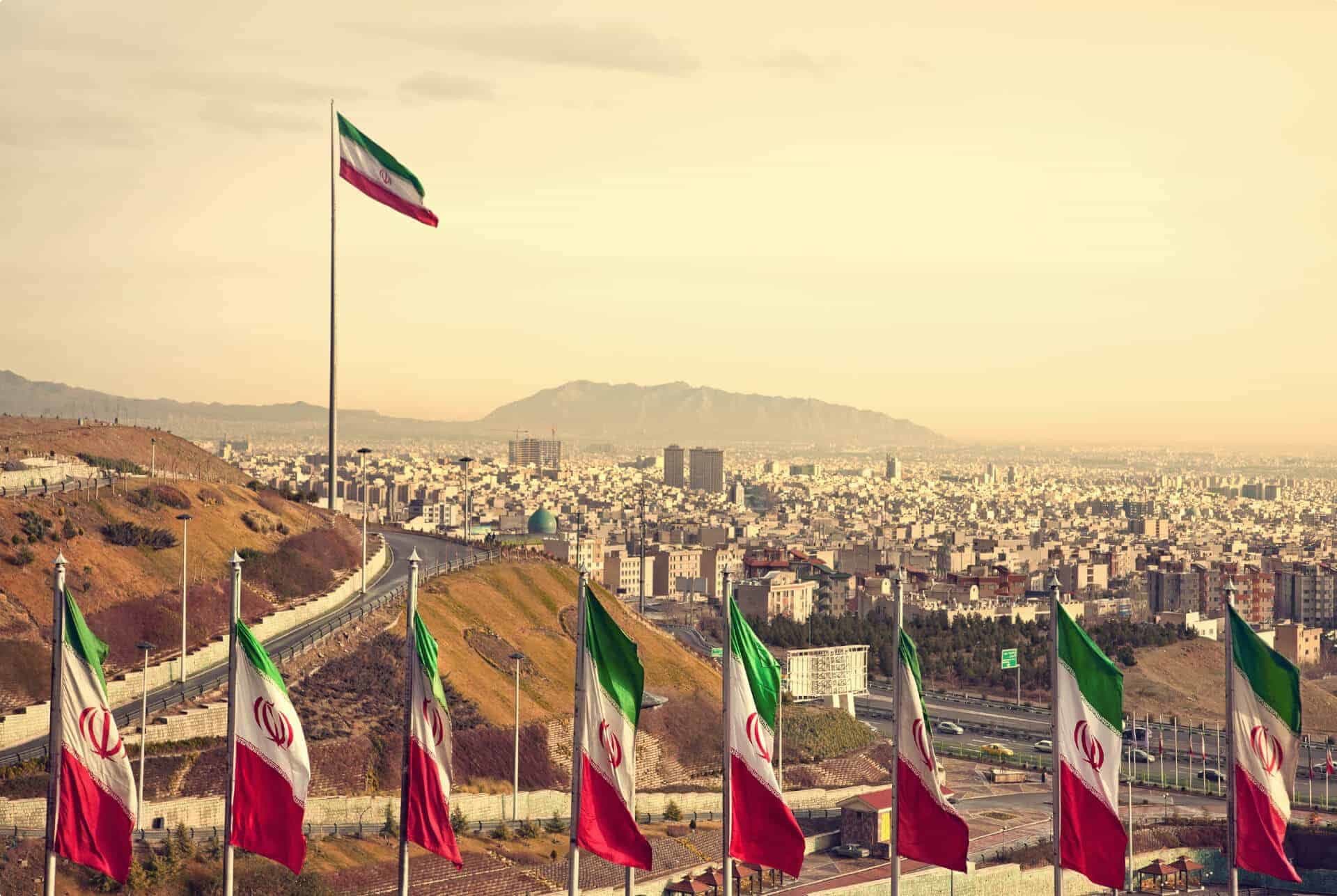
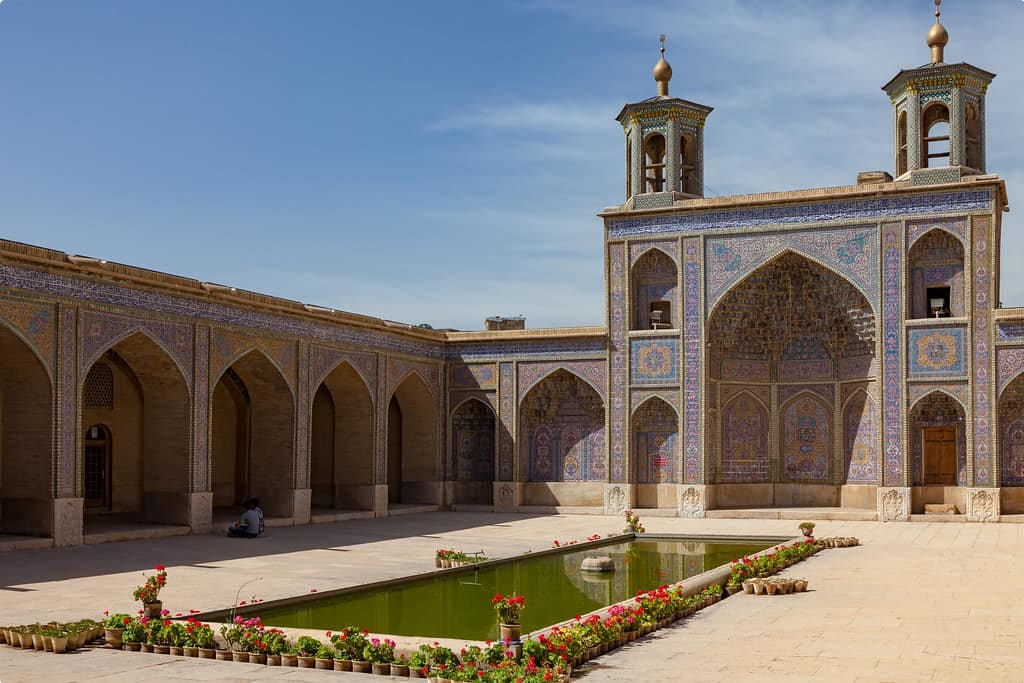
What is Iran's climate?
Iran has a diverse terrain, and the climate, depending on where you are, can vary from subtropical to subpolar. On average, Iran has dry summers and cool winters. In Tehran, January is the coldest month (8 degrees Celsius) and July-August the warmest months (36-37 degrees).
The peak season for travel is from March to May because of the mild weather and the celebration of the No Ruz or Iranian New Year, which usually occurs on March 21.
The shoulder months of September and October have moderate weather, while the winter months (November to February) are usually avoided due to the extreme cold (unless you’d like to go skiing!).
What should you wear in Iran?
Islamic dress codes (modest clothing and head covering for women) are strictly enforced on Iranian citizens, but rules are not as tight for foreigners, who are given some degree of flexibility. However, it is still advisable to observe and respect local customs.
For women, this means wearing a head covering (usually a scarf) and wearing clothes that cover your arms and legs in public places. Tops should extend to cover your behind, especially if wearing tight jeans. Wearing outerwear such as a manteau (a long coat or coat dress, usually made of cotton) is a good option.
For men, there are less restrictions, but shorts and sleeveless shirts should still be avoided.
Important shrines may require women to wear a chador, which is available on-site and can be borrowed. A chador is a large piece of cloth that leaves only the face visible.
What are the places to visit in Iran?
A country with a dramatic and colourful centuries-old history is bound to have incredible places to visit, ranging from natural to architectural wonders. Iran is definitely no exception.
Your port of entry will most likely be the capital, Tehran, which has sights from its imperial past, alongside cosmopolitan comforts. Walk around Azadi Square and take a postcard-perfect photo of the Azadi Tower, the symbol of Tehran. It was inaugurated in 1971 by Mohammad Reza Shah as Shahyad Tower (Shahs’ Memorial Tower) to celebrate the 2500th year of the Persian Empire. After the 1979 Revolution, it was renamed Azadi Tower, or Freedom Tower. The streets near the University of Tehran are also packed with trendy shops and book stores.
The lavish Golestan Palace, home of the Qajars and originally built in the Safavid era, exhibits the wealth and extravagance of the Persian monarchy. It is a World Heritage Site, noted for its incorporation of Persian and Western design.
One edifice that is considered an architectural masterpiece and a treasure of Islamic architecture is the 16th century Shah Mosque (also known as Imam Mosque or the Royal Mosque) located on the Naghsh-i Jahan Square (“Image of the World”, also known as Imam Square) in Isfahan. The Imam Square and the grand mosque are products of the massive urban planning undertaken in 1598, when Shah Abbas I moved the capital of Persia from Qazvin to Isfahan in an effort to avoid assaults by the Ottomans and to control the Persian Gulf.
Both the mosque and the square are listed by UNESCO as World Heritage Sites. The Shah Mosque, famous for its seven-colour mosaic tiles and calligraphic inscriptions, is located on the south side of the square and is angled at 45 degrees to face Mecca.
The 19th century Nasir al-Mulk Mosque in Shiraz, Fars Province is also known as the “Pink Mosque” because of its rose-coloured tiles. Built to catch the morning sun, the Pink Mosque is best appreciated in the morning when sunlight shines through its stained-glass windows, turning its interior into a kaleidoscope.
Mosaic tiles are not exclusive to Iran’s mosques. One of the finest examples of the use of this technique on a Christian structure is the Vank Cathedral (also known as the Holy Saviour Cathedral, or the Church of the Saintly Sisters) in the New Julfa district of Isfahan. The district is named after the city of Julfa in Armenia (today’s Azerbaijan Republic) and “Vank” is an Armenian word meaning “monastery”. The cathedral was established in 1606 and completed in 1664 for the hundreds of thousands of Armenians who were deported during the Ottoman War (1603 to 1618) and were resettled by Shah Abbas I in the district.
The cathedral’s interior is an interesting mix of Christian and Islamic design, with Italian and Dutch-style frescoes on the walls and Persian-style gold-and-blue mosaic tiles on the walls and ceiling. The cathedral is topped with a dome, at first glance making it look more like a mosque than a Christian church.
In Shiraz, visit the ancient Abarqu Cypress tree, and the UNESCO-listed site of Pasargadae, where Cyrus the Great, founder of the Achaemenid dynasty, is entombed.
You may also visit Persepolis, founded by Darius I in 518 BCE. Persepolis, the capital of the Achaemenid Empire, is located about 60 kilometres northeast of Shiraz. It was built on an immense half-artificial, half-natural terrace. The importance and quality of the monumental ruins make it a unique archaeological site.
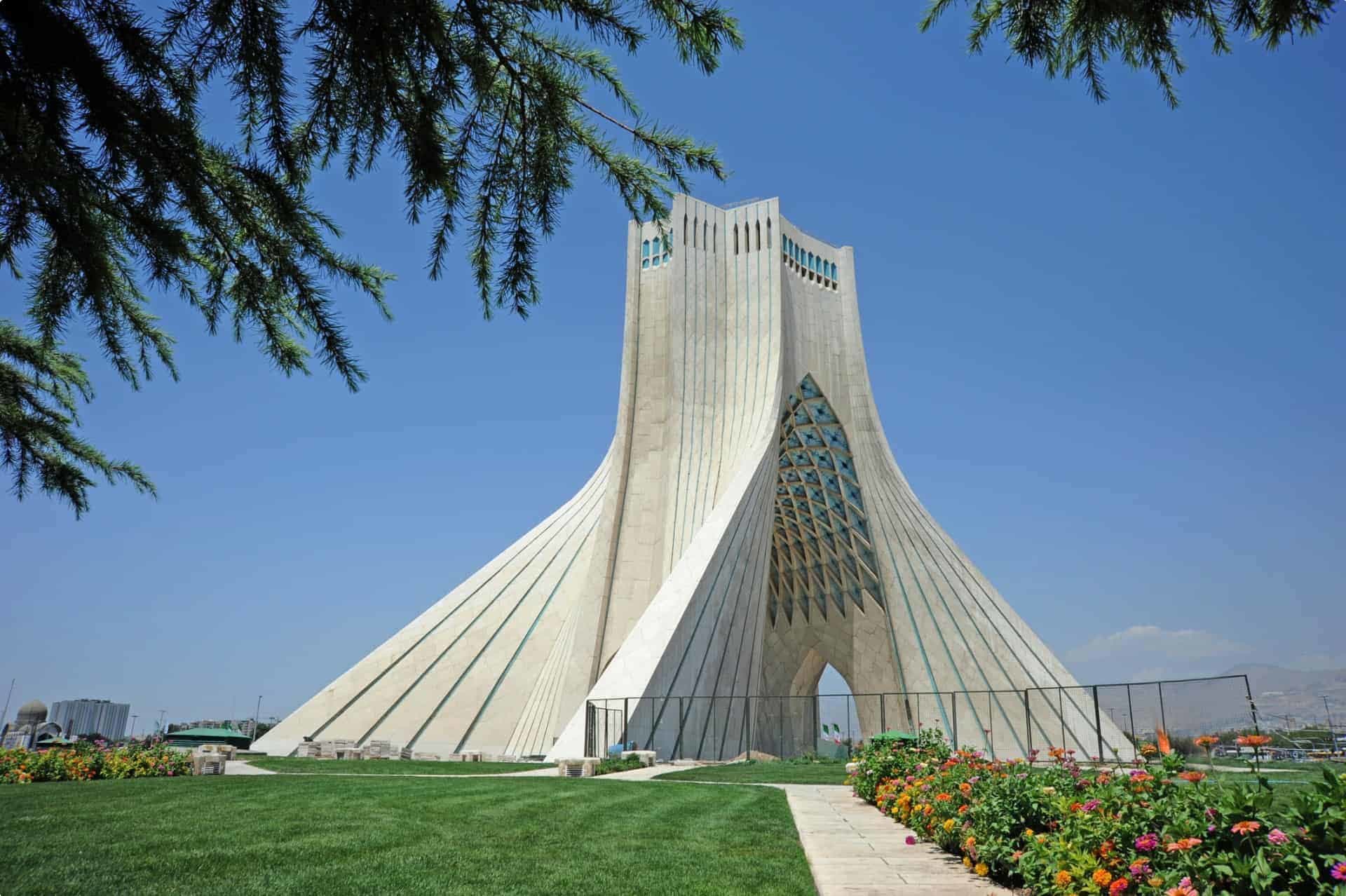
Azadi Tower, Tehran, Iran
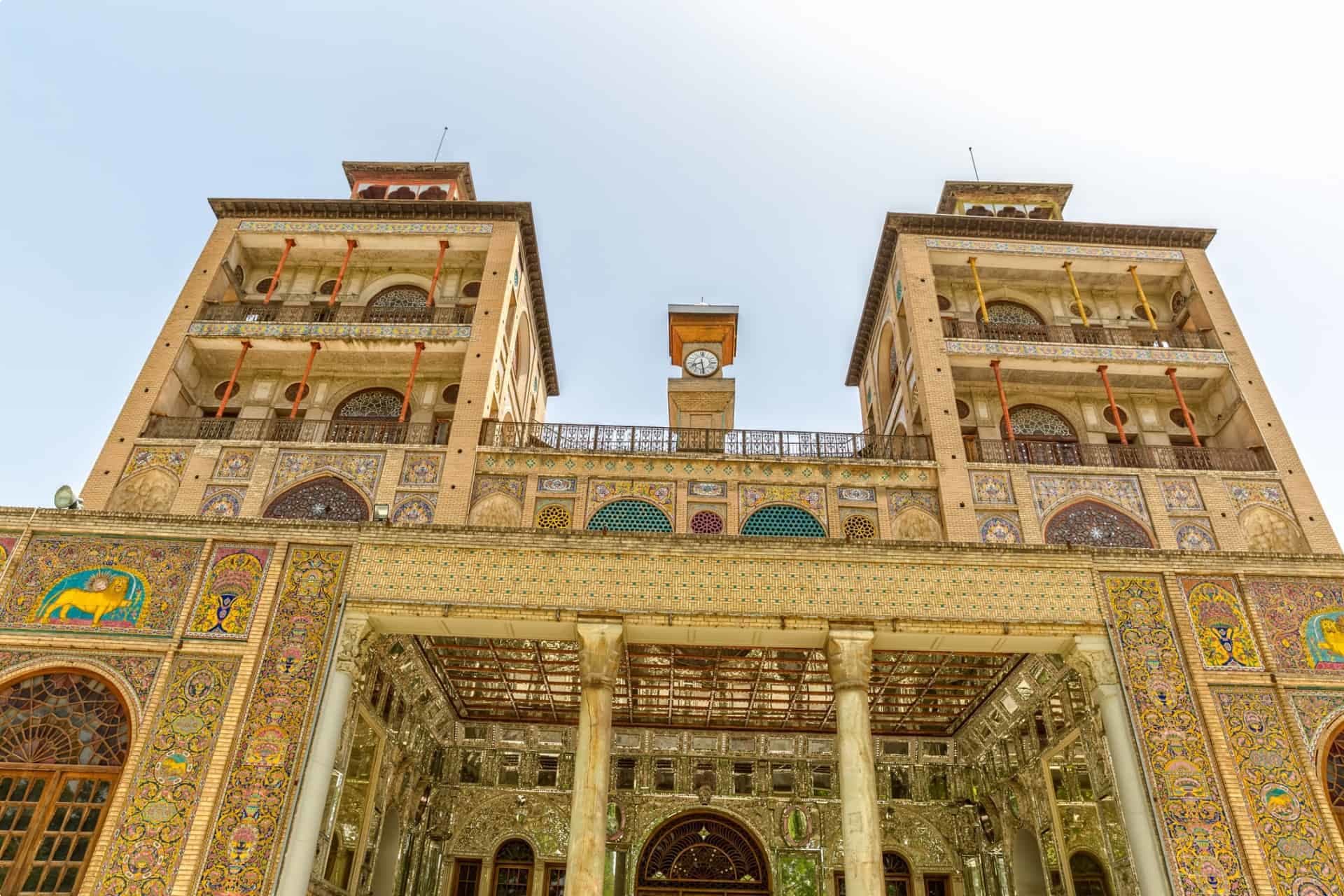
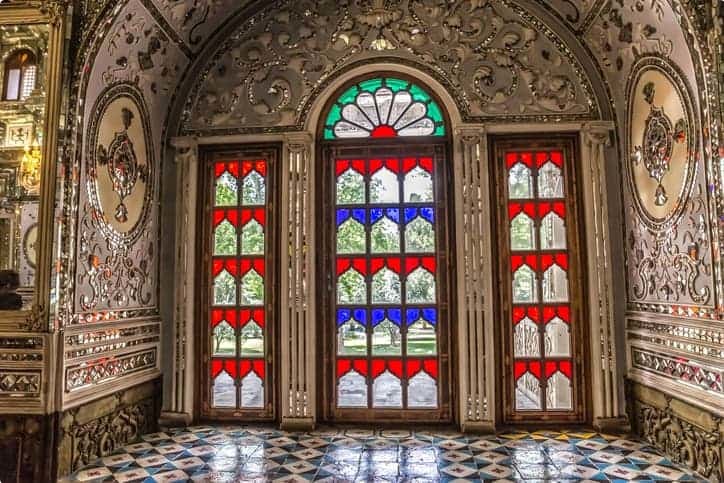
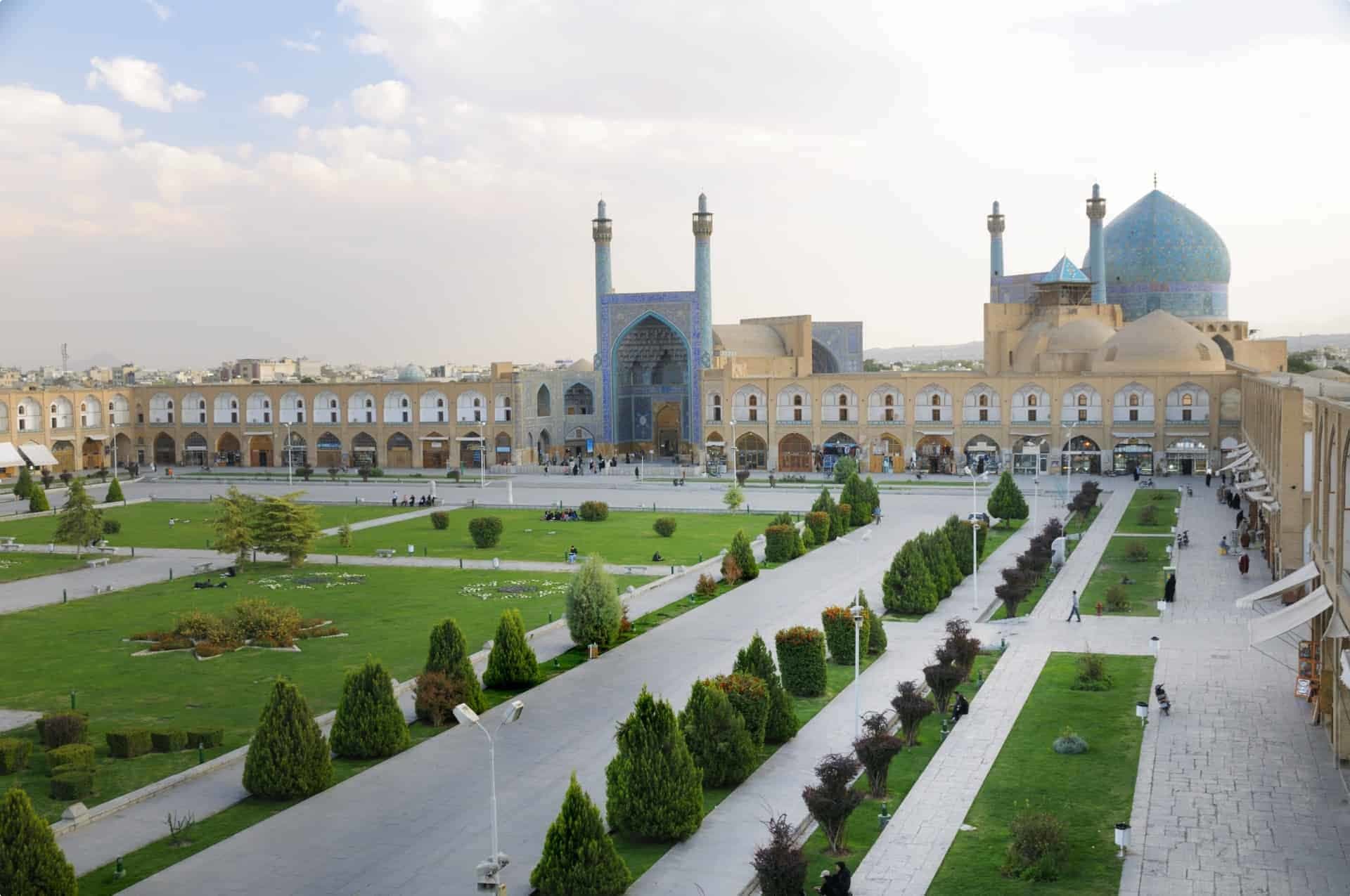
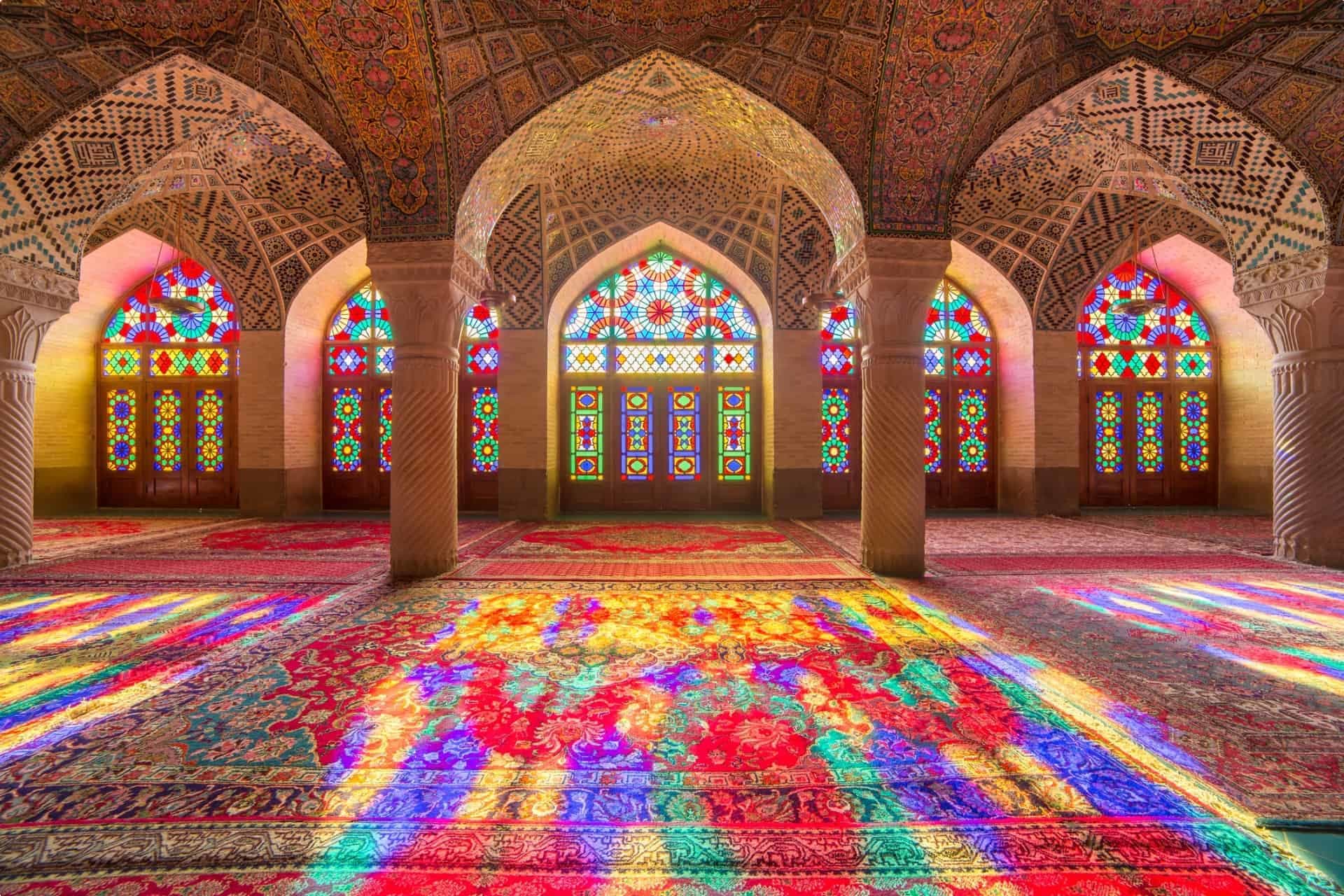
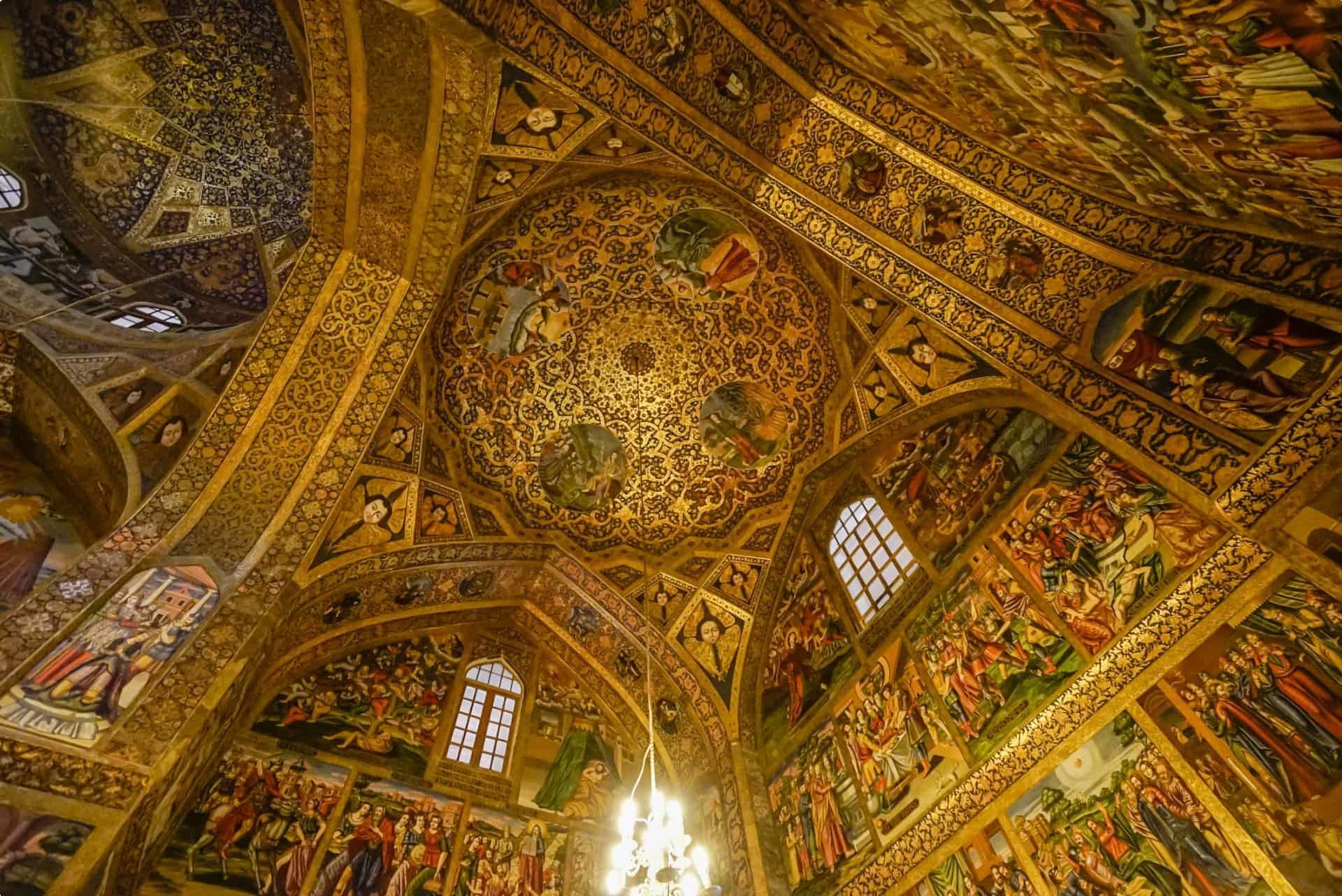
If you’re interested in learning more about Iran, you might want to take a look at some of our other articles:
- Tehran Through Time
- Safavids in Persia
- History of Persian Carpets
- Beauty and Artistry in Iran: Persian Gardens and Mosaic Tiles
- Persepolis in Iran, a famous place on any escorted small group tour
- Travelling in Iran – the history and monuments of ancient Persia
- Thirty must see places when visiting Iran
You might also be interested in our suggested list of Ten Books to Read About Iran.
Related Tours
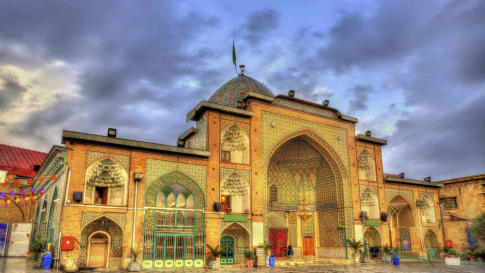
17 days
Sep, Nov, AprIran Culture and History Escorted Small Group Tour for seniors
Visiting Iran
Unlike its neighbours to the west and northwest, Iran had not adopted Christianity and it was the explosive spread of Islam and its ready adoption, without the Arabic language or customs, which helped unite the culture and greatly enrich Persian heritage. This small group tour program includes the great cities of Iran, historic sites, mosques, gardens, bazaars and teahouses for couples and solo travellers.
From A$11,825 AUD
View Tour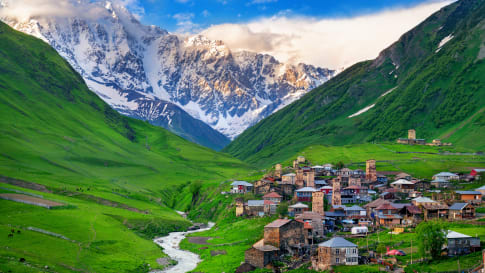
22 days
May, OctSmall Group Tour to the Caucasus | Armenia Azerbaijan Georgia
Visiting Armenia, Azerbaijan
This small group program is designed to give people an opportunity to explore Tbilisi, Baku, Yerevan as well as important monuments, historical and religious sites, diverse landscapes and ancient architecture by visiting the Caucasus Mountains and the lowlands of Armenia, Georgia and Azerbaijan. Led by local English speaking guides, there will be the opportunity to meet local people.
From A$11,835 AUD
View Tour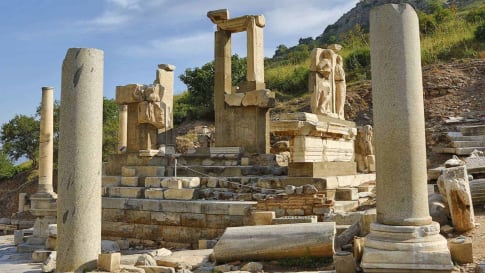
21 days
Aug, AprSmall group tour of Ancient Turkey
Visiting Turkey
As a travel company we seek to keep guests off the beaten path. Trips that are remembered for authentic experiences. Our small group journeys in Turkey are fully escorted by an experienced local guide and an Odyssey guide to give this type of experience whether at one of the many UNESCO World heritage sites explored or local bazaars. It is always about the adventure and memories that we will create.
From A$17,295 AUD
View TourArticles
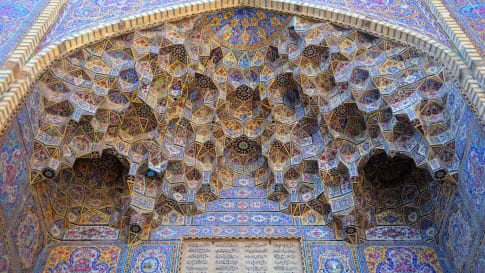
Beauty and Artistry in Iran: The Persian Garden and Persian Mosaic Tiles
Guide to Persian Mosaics and Gardens | Small group tours Iran Beauty and artistry can be seen everywhere in Iran, and its philosophy and religious beliefs are reflected in the country’s public and private spaces.…
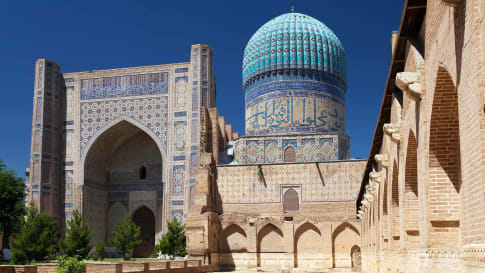
Elements of Mosque Architecture
The word "mosque" often brings to mind not this simple prayer space, but the ornately decorated monuments built by powerful Islamic rulers.
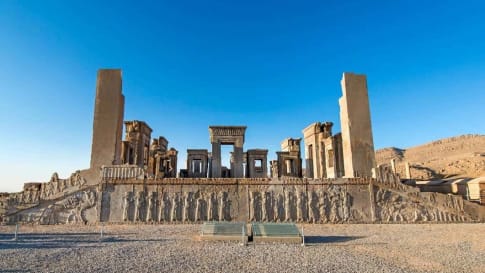
Highlights of Iran | Persepolis
Highlights of Iran | Persepolis Persepolis was once the capital of an empire that ruled a territory that covered Egypt to India. It is one of the wonders of the ancient world. The Achaemenid Kings…
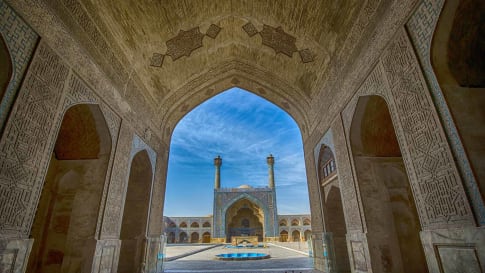
History of Mosques in Iran and Central Asia
During the Islamic period of Iran, glazed bricks were used to create breathtaking and mesmerising wall and ceiling designs in mosques. Click through to read more.
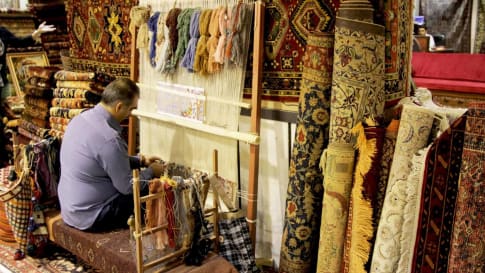
History of Persian Carpets
History of Persian Carpets: From the Nomadic Tribes of Iran to Europe’s Richest | Small group tours Iran In addition to its gardens and mosaic tiles, Iran (formerly Persia) is famous the world over for…
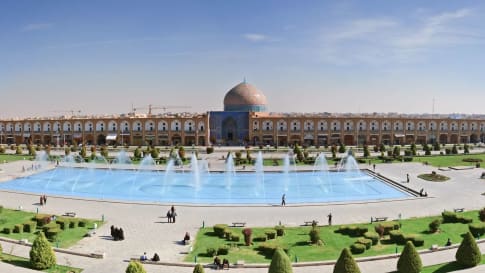
Isfahan,Iran
Isfahan was capital of Persia in the 11th century and the 16th century. Its first period as capital came in 1047, when the Seljuks made Esfahan their capital and adorned it with their magnificently geometric style of architecture.

Shiraz, Iran
In the mid-1700s, Shiraz became the official capital of Iran under the Zand dynasty. Many of the most beautiful buildings were built or underwent restoration in this period.

Tehran Through Time: The Definitive Guide for Travellers
Tehran Through Time | Small Group Tours Iran Tehran, Iran at the foot of the snow-capped Alborz Mountains. Following the 1979 Iranian Revolution that toppled its monarchy and paved the way for an Islamic Republic…
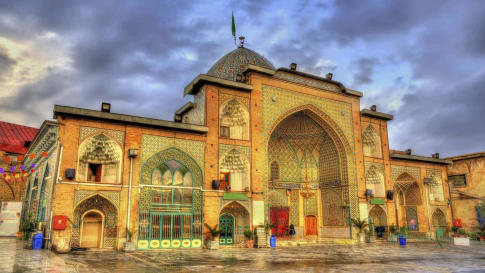
The history and monuments of ancient Iran
Visiting Iran | Small group tours Iran Women visit a carpet store in Shiraz, Iran. Throughout history, Iran’s position in the centre of the famous Silk Road has seen it crisscrossed by travellers, traders and…


